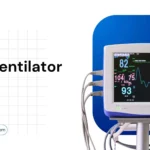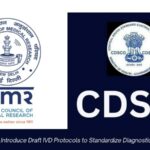Industry Overview
India has witnessed a boom in its healthcare and medical devices industries over the past decade. Everything from consumables to implantable medical devices is manufactured in our country. India’s medical device industry is growing rapidly, and is valued at $14 billion in 2024, which is expected to double to $30 billion by 2030.
As the fourth-largest market in the Asia medical device market and the twentieth-largest in the world, India is steadily establishing a strong global footprint. The country has also exceeded $4 billion in medical device exports, a sign of the growing importance India has as a major manufacturing centre in the worldwide MedTech industry.
Indian Medical Device Export Industry
Medical device exports in India grew significantly from FY 21-22 to FY 23-24, with domestic manufacturing uptick and enabler initiatives like Make in India.
- Exports of consumables and disposables grew by 27.14% while implants registered a massive 97.03% increase, showing India as an emerging destination for the world, as a destination.
- The fastest-growing component was surgical instruments, which saw growth of 11.26%. These numbers signal India’s growing presence in the global MedTech export market.
India’s exports of medical devices to the UK reached approximately USD 122 million in 2024, while imports stood at USD 276 million, reflecting a 36% year-on-year rise according to Association of Indian Medical Device Industry (AiMeD) While having a robust domestic market in low-risk, high-volume products such as surgical instruments and PPE kits, India continues to depend on imports for sophisticated equipment like MRI machines and ventilators.
Major export products to the UK are contact lenses, diagnostic reagents, and IVD instruments, while imports consist of oxygen therapy and X-ray devices. The limited domestic production of high-tech equipment fuels this dependence on imports. Import taxes on MedTech goods under the India–UK FTA will be reduced from approximately 15% to 3%, decreasing costs and enhancing access to sophisticated medical technologies. This is likely to spur technology transfers, joint ventures, and talent creation, making the healthcare value chain in the two nations more robust.
India-UK Trade
The India–UK Free Trade Agreement introduces a Mutual Recognition Agreement (MRA) to ease the export of Indian medical devices to the UK. The India-UK trade pact will allow Indian medical devices to enter the UK at zero tariffs, down from 2–6%, boosting competitiveness against countries such as China, Brazil, and Vietnam. A mutual recognition framework will ease access for products certified by CDSCO or ICMED, enhancing opportunities for Indian surgical and diagnostic equipment in the UK market. The UK medical device market, valued at USD 32 billion in 2024, is likely to grow at a compound annual growth rate (CAGR) of 7.19% to USD 69 billion by 2035, providing ample export opportunities to Indian manufacturers.
The MHRA of the UK and the CDSCO of India are working together on a bilateral regulatory cooperation, most likely in the form of a Mutual Recognition Agreement (MRA). Under the agreement, joint inspection, exchange of data, standardised documentation, and training are required to enhance trust and market access. It also provides that only eligible goods receive tariff advantages by imposing the Rules of Origin (RoO).
Domestic Reforms Powering Global Aspirations
The Indian government has launched a number of programs to boost the medical device sector, with a particular emphasis on 100% foreign direct investment (FDI) in medical devices and research and development (R&D) to expand the market.
- The Union Cabinet has approved the National Medical Devices Policy, 2023, on 26th April 2023. The National Medical Devices Policy, 2023, is likely to enable an orderly development of the medical device industry to address the public health imperatives of access, affordability, quality, and innovation. The policy will provide a boost to the Medical Devices Sector to grow from the current US$11 billion to US$50 billion in 2030.
- In the PLI scheme for Medical Devices, a total of 26 projects have been approved so far with a committed investment of Rs. 1,206 crore (US$147 million) to facilitate growth and innovation in the MedTech sector and position India as the world’s hub for manufacturing and innovation over the next few years.
- In September 2022, the Indian government sanctioned the establishment of an export promotion council for medical devices, headquartered in Noida, under the Department of Pharmaceuticals.
- In August 2022, the Department of Pharmaceuticals approved the “Promotion of Medical Device Parks” programme during FY21-25 for a total financial outlay of Rs. 400 crore (US$48.97 million), with overall assistance under the programme of Rs. 100 crore (US$12.24 million) for a single Medical Device Park.
- Andhra Pradesh Medtech Zone Ltd. (AMTZ), located in Telangana, is the largest manufacturing hub of medical devices globally, with the presence of more than 150 companies. It has shared manufacturing facilities and shared scientific facilities to manufacture a wide range of products, ranging from masks to MRI scanners, CT scans, heart valves, pacemakers, cyclotrons, etc. It has been granted a grant-in-aid of ₹25 crore under the sub-scheme for support to the medical devices industry for a common facility centre for establishing a common facility for testing and research of superconducting magnetic coils.
- In August 2022, the Department of Pharmaceuticals reconstituted the National Medical Devices Promotion Council (NMDPC) under the Chairmanship of the Secretary of the Department of Pharmaceuticals.
- The government introduced a draft for the new Drugs, Medical Devices and Cosmetics Bill 2022, in July 2022 to ensure and provide comprehensive legal safeguards to ensure that medical products sold in India are trustworthy, effective, and of the standards required.
- In Union Budget 2022-23, a budget of Rs. 86,200 crore (US$11.3 billion) was allocated for the pharmaceutical and health care industry.
With the UK opening its doors and India’s MedTech engine gaining speed, the world is set to witness India’s emergence as a global MedTech powerhouse. The India–UK Free Trade Agreement, local efforts such as the National Medical Devices Policy, the PLI scheme, and infrastructure like AMTZ and specialised medical device parks are lowering costs and inducing innovation.
Together, all these initiatives are setting the stage for India to become an internationally competitive destination for the manufacturing and export of medical devices.










